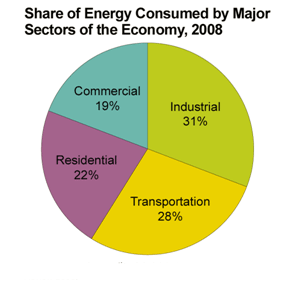This could be internal corona discharge. The switchgear should be de-energized and closely examined. That means pump out the SF6 and take it apart. Examine all insulating components.
Especially if the sound can be localized to portions of the switchgear which do not have bushings for connection to overhead lines. Even if the sound is in the area of air bushings, deenergizing will allow more in-depth inspection and addressing any sharp edges or cracked insulators, etc.
Especially if the sound can be localized to portions of the switchgear which do not have bushings for connection to overhead lines. Even if the sound is in the area of air bushings, deenergizing will allow more in-depth inspection and addressing any sharp edges or cracked insulators, etc.
When a choosing a power cable for a motor, we prefer using one larger diameter cable than two smaller diameter cables in parallel, although it would cost less to do so. Why?
We are frequently changing tap position of Unit station transformer due to voltage problem. What are the impacts on transformer life and is there any solution to minimize this?
Hysteresis would also lead to harmonics, complicating things even further. And, when considering unbalanced three-phase systems and/or the presence of harmonics, the conventional tools for power system analysis might not be applicable.
For a "physical" interpretation, reactive current (power/KVA flow), in my opinion is best looked at from the perspective of a generator connected directly to an infinite bus (in LV generators this is the norm).
Before breaker's selecting for your electrical system, you need to calculate value of expected short circuit current at the place of breaker's installation. Then you need to calculate value of heat pulse and 1s current (expected value of current during one second). After that you need to calculate power of breaker and finally, after all, you can select appropriate breaker. Values of characteristics of selected breaker need to be higher from calculated values of characteristics of your power system.
PWM is shorted for Pulse Width Modulation, it's a variable frequency drive (VFD) regulate way to change the pulse width according to certain rules to adjust the output volume and waveform.
PAM is shorted for Pulse Amplitude Modulation, it's to change the pulse amplitude according to certain rules pulse amplitude pulse train to adjust the variable frequency drive output volume and waveform.
PAM is shorted for Pulse Amplitude Modulation, it's to change the pulse amplitude according to certain rules pulse amplitude pulse train to adjust the variable frequency drive output volume and waveform.
1: Torque boost: this function is the variable speed drive increases output voltage (mainly in low frequency) to compensate the torque loss due to voltage drop in the stator resistance, thereby improving the motor output torque.
2: Improve the motor insufficient output torque in low speed
"Vector control" can make the motor output torque at low speeds, such as (without speed sensor) 1Hz (for 4-pole motor, the speed is about 30r/min), same as the torque output at 50Hz power supply (maximum is approx 150% of rated torque).
2: Improve the motor insufficient output torque in low speed
"Vector control" can make the motor output torque at low speeds, such as (without speed sensor) 1Hz (for 4-pole motor, the speed is about 30r/min), same as the torque output at 50Hz power supply (maximum is approx 150% of rated torque).
There are possibilities of having inter-turn faults on the rotor winding: when the insulation positioned between adjacent conductors break (electrically) over time under certain mechanisms. These mechanisms can include; turn to turn movement caused by thermal expansions (during starts/stops cycles), rotor coil shortening, end strap elongation, inadequate end-turn blocking or conductive bridging formed by contamination.
Heating and cooling capacity to determine the variable frequency drive output current capability, thus affect its output torque capability.
Carrier Frequency: generally the variable frequency drive rated current is the continuous output value under the highest carrier frequency, the maximum ambient temperature. Reduce carrier frequency won't affect the motor current, but will reduce electronic devices heating.
Carrier Frequency: generally the variable frequency drive rated current is the continuous output value under the highest carrier frequency, the maximum ambient temperature. Reduce carrier frequency won't affect the motor current, but will reduce electronic devices heating.
Generally, electric motors are designed according to 50Hz power supply, its rated torque also in this frequency. Therefore, the speed adjustment under rated frequency called constant torque speed adjustment. (T = Te, P <= Pe).
If the variable speed drive outputs frequency exceeds 50Hz, the motor torque is inversely proportional to the frequency in linear relationship decrease. When the motor running in above 50Hz frequency, we should consider the motor loads to avoid motor lacks of torque.
If the variable speed drive outputs frequency exceeds 50Hz, the motor torque is inversely proportional to the frequency in linear relationship decrease. When the motor running in above 50Hz frequency, we should consider the motor loads to avoid motor lacks of torque.
Generally, the motor torque is decreased with frequency decreases (speed reduction). By using vector control frequency inverter, to improve output torque during motor running in low speed, and even output sufficient torque at motor low speed zones.
 Gozuk Blog: all about electric motor control & drives industries development in energy saving applications.
Gozuk Blog: all about electric motor control & drives industries development in energy saving applications.Featured
Like pumps, fans consume significant electrical energy while serving several applications. In many plants, the VFDs (variable ...
 A frequency inverter controls AC motor speed. The frequency inverter converts the fixed supply frequency (60 Hz) to a ...
Motor starter (also known as soft starter, motor soft starter) is a electronic device integrates soft start, soft stop, ...
Soft starter allows the output voltage decreases gradually to achieve soft stop, in order to protect the equipment. Such as the ...
Soft Starter reduces electric motor starting current to 2-4 times during motor start up, reduces the impact to power grid during ...
A frequency inverter controls AC motor speed. The frequency inverter converts the fixed supply frequency (60 Hz) to a ...
Motor starter (also known as soft starter, motor soft starter) is a electronic device integrates soft start, soft stop, ...
Soft starter allows the output voltage decreases gradually to achieve soft stop, in order to protect the equipment. Such as the ...
Soft Starter reduces electric motor starting current to 2-4 times during motor start up, reduces the impact to power grid during ...
 A frequency inverter controls AC motor speed. The frequency inverter converts the fixed supply frequency (60 Hz) to a ...
Motor starter (also known as soft starter, motor soft starter) is a electronic device integrates soft start, soft stop, ...
Soft starter allows the output voltage decreases gradually to achieve soft stop, in order to protect the equipment. Such as the ...
Soft Starter reduces electric motor starting current to 2-4 times during motor start up, reduces the impact to power grid during ...
A frequency inverter controls AC motor speed. The frequency inverter converts the fixed supply frequency (60 Hz) to a ...
Motor starter (also known as soft starter, motor soft starter) is a electronic device integrates soft start, soft stop, ...
Soft starter allows the output voltage decreases gradually to achieve soft stop, in order to protect the equipment. Such as the ...
Soft Starter reduces electric motor starting current to 2-4 times during motor start up, reduces the impact to power grid during ...
In Discussion
Added values of Super/Ultra capacitors for the PV industry sector?
Solar panels for office with 7800 KW power consumption
Trace motor consumptions
Realtime intelligent alarming and guidance system for production process control
Differential Protection of 6600V Induction motor
Amorphous core based Gapped inductors
Low cost controller with integrated switch
Silver plated copper wires(SPC).
Solar panels for office with 7800 KW power consumption
Trace motor consumptions
Realtime intelligent alarming and guidance system for production process control
Differential Protection of 6600V Induction motor
Amorphous core based Gapped inductors
Low cost controller with integrated switch
Silver plated copper wires(SPC).




